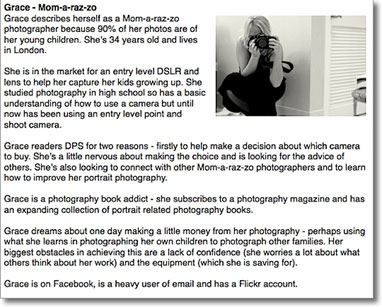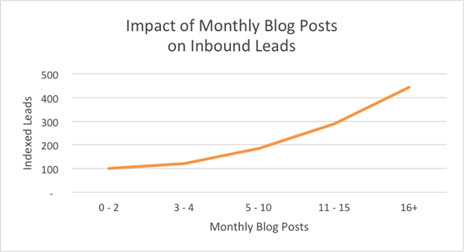According to Content Marketing Institute’s study of B2B firms, “60% of B2Bs with a documented content marketing strategy consider their organization to be effective.”
While an editorial calendar is hardly a ‘strategy,’ it is an essential part of one. It’s the preferred documented roadmap of many publications that rely on content for their marketing and lead-generation.
Joel Kurtzman, previous editor of Harvard Business Review, is known for using an editorial calendar to establish thought leadership in organizations he’s worked with.
But how can you, an SMB owner, benefit from an editorial calendar? You might think it’s only useful for major magazines and Fortune 500 companies with big budgets, but it’s hardly the case.
Here’s How Your Reputation and Business will Benefit from Having an Editorial Calendar:
- Strategic Approach
Whether you’re new in content marketing, or have been running your blog for a few years, you’ve probably created audience personas and categories for your blog. You use this information in determining what to publish on your site.
Be honest though, have you ever deviated — or forgotten — these guidelines? How often have you written something, only to realize later on that it doesn’t serve your target audience?
Do you sometimes find yourself rambling, writing one random ‘good idea’ after another without an obvious theme or story arc?
Editorial calendars keep you in line with your content marketing strategy, ensuring you publish different pieces that serve your target personas, not just one of them. For example, one of Darren Rowse’s personas for his photography blog is “Grace” an imaginary mom who uses her camera mostly to take pictures of her children. With that persona as a guide, he has several posts catered to that audience.

- A Bird’s Eye View of Your Website’s Blogging Efforts
Editorial calendars spanning a month or a quarter gives you a big picture look at your blog’s content schedule, so you can easily adjust it to fit your business’s goals and other relevant events.
Editorial calendars can be used for:
- Planning recurring features, such as TED’s summer reading list that started in 2013.

(Photo from TED)
- Plan a series of articles on a specific theme, such as Tuts+ series on Buying and Running a Successful Franchise
- Brainstorm story ideas in advance to take advantage of press opportunities during popular industry related events, annual conferences, event, or holidays.
- Plan promotional and educational content for product launches, seasonal sales, promotions, and other corporate milestones. Marking these days ahead of time allows you to create content in advance.

- Maximize Promotion Opportunities through Content Repurposing
Editorial calendars aren’t just for planning and organizing topic ideas. It’s also a gold mine of ideas and digital assets for content repurposing. Doing this squeezes more mileage from your content, while extending your reach via new platforms.
Here’s how other bloggers take advantage of already published content:
- Promote old blog posts in your social media feed, again.
- Buffer’s Post on 27 Copywriting Formulas turned into a Slideshare with The 10 Best Copywriting Formulas. They didn’t convert everything into slides, but its evident the content came from the first blog post.

(blog post) 
(Slideshare)
As you can see from the stats, the added reach of the Slideshare isn’t too shabby for a repurposed article.

- Turn old podcast episodes into blog posts or social media snippets
- More Blog Posts = More Traffic and Leads
According to Hubspot’s new benchmark data, out of 13,500 customers surveyed, those that published 16 or more blog posts get about 3.5x more traffic than other companies that only published up to 4 times a month.
And it’s not just traffic, those publishing 16 or more blog posts a month get 4.5x more leads compared to others that only publish about 4 posts a month.

If you don’t have a big team of writers, or you’re the sole writer for your website, 16 blog posts a month will be a challenge without an editorial calendar. It’s easy to fall of schedule without a definite plan showing you exactly what to write about and when it’s due for publishing.
- More Time to Focus on Research and Quality Writing
How often have you searched for relevant information right before you start writing? How often have you relied on topic generators because you can’t come up with something fresh?
An editorial calendar filled with broad categories and rough story ideas in advance gives you the freedom to dedicate more time into researching and writing each article. Instead of frantically thinking about what to write, you can spend time finding relevant statistics, case studies, examples and doing interviews.
Check out this post on How Attorneys can Use Infographics for Legal Marketing with more than 10 infographic examples — all specific to the target audience, law firms and legal service providers. You’ll have a hard time coming up with spot-on examples like the one in that post without ample research time.
- Editorial Calendars Make Managing Multiple Contributors a Breeze
Many business blogs have multiple contributors. Often, the CEO is a thought leader in the business’s market, the CMO writes about the company’s marketing efforts, and individual staff members write about the goings on in their department. Even if everyone writes on a different beat, there’s still a chance for two contributors to write on very similar topics. An editorial calendar prevents this.
Aside from that, an editorial calendar ensures that content is published in a well-spaced timeline, instead of chunked in certain days with glaring gaps of inactivity on busy weeks.
But Plans can Change
Of course they can! Yes, editorial calendars can be a huge waste of time if you end up not using it because of a scrapped product idea, business model changes, or even a change in your job description. But that doesn’t mean you have to trash the whole plan. You can always adjust it to reflect the changes in your goals and plans.
Anticipate Changes
Having a well-planned editorial calendar will help you establish a reputation as a thought leader in your industry. But only if you actually take the time to dive deep into your website’s analytics to see which topics are worth focusing on in your next editorial calendars. You can’t expect to write about the same themes over and over, right?
Lead your brand. Prepare to re-evaluate your blog’s general focus, topics and keywords as your market dictates it.
